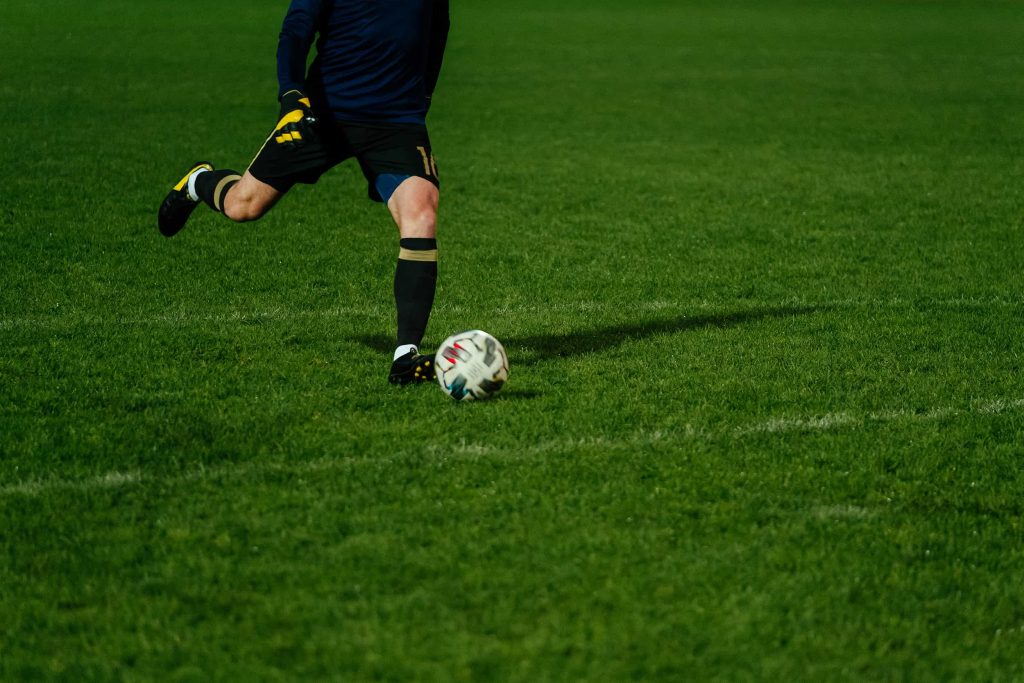Ahead of a big week for Borussia Dortmund, I’ll be taking a look at their build-up play in the first half of the 1-0 win over Wolfsburg on the weekend (03/11). Atletico Madrid and Bayern Munich will provide stern challenges for Dortmund, especially in the pressing phase. So I thought it would be interesting to study Dortmund’s current tactics and issues as well as how they might perform away to Atletico and at home to Bayern.
Atletico in particular (despite being thrashed 4-0) did well to disrupt Dortmund’s patient build-up play in defensive areas. However, they made a few errors and they were also unlucky to concede an offside goal, which led to the perception that they actually defended badly, which according to me is not true. Bayern, in the Bundesliga, will pose a different challenge, because along with their usually solid high-pressing, they have the ability to dominate possession for long periods of the game. The problem presents itself in the fact that Dortmund might be pinned back and unable to break out of Bayern’s high-pressing block, if Bayern manage to establish possession in advanced areas. Anyway, at the moment we’re yet to see how those two fixtures will pan out. For now, take a look at my tactical analysis of Dortmund’s build-up against Wolfsburg.
Similar styles:
It’s important to note that Wolfsburg actually played in a very similar style to Dortmund. Their play included patient build-up (with the ability to play long aerial passes forward under pressure), attacking transitions when space opened up inside of Dortmund’s high-pressing structure as well as a mix of high-pressing and midfield-pressing depending on the situation. We’re going to take a look at how Dortmund played against Wolfsburg’s high-press as well as their midfield press/defensive press.
Build-up Against High-Pressure:
Wolfsburg used a 4-3-3 formation which featured a very compact attacking and midfield line. Ginczek at right-wing and Brekalo at left-wing positioned themselves inside the half-spaces from their base as a base reference. Rexhbecaj and Gerhardt, who flanked Arnold in midfield, positioned themselves in the same channel in midfield. When they had access to the ball, Wolfsburg pressed with a focus on forcing Dortmund’s play wide before squeezing them and regaining the ball. This worked in a few situations when Dortmund’s passing lacked speed and the players weren’t positioned correctly to have awareness where the pressure was coming from and how to respond. Wolfsburg’s narrow structure, however, wasn’t suited to a high-pressing game in which spaces need to be covered across the pitch rather than just the centre. Dortmund are very adept at using wide areas to create space while building-up and circulating the ball in advanced areas and so this just played right into their hands.
From the kick-off, Dortmund were flexible enough positionally to break out of pressure thanks to the support of the wingers Bruun Larsen and Sancho who added extra numbers during the build-up. Reus was marked and outnumbered in midfield and this meant that Dortmund’s attacking outlet would have to come from wide areas. What allowed them to progress upfield even better was the synergy between Dortmund’s wingers and Guerreiro and Hakimi. Both fullbacks were excellent this game by constantly making overlapping runs and drawing Wolfsburg’s inside players out of position. All it took was a player or two to move out of infield and press wide, for space to open up infield or the far side for Dortmund to utilise.




When Dortmund’s fullbacks received the ball from their centre-backs out wide (triggering Wolfsburg’s press), the wingers would drop deep, and the consequence of this would be twofold. Firstly, the wide midfielder would move out to press the winger, therefore requiring the other midfielders to shift and thus opening space up on the far side. Or, the opposite fullback would press Dortmund’s winger upon receiving the ball, and this would open up space for Reus to run into. That would mean that Reus could receive unmarked, or drag a midfield player with him, which would allow Paco to drop deep and create an extra pass option. Or the Dortmund winger would be able to move into the central area and use that space to play too.



The two consequences meant that there were several ways that Dortmund could find space, exploit it and disorganise Wolfsburg’s pressing structure. This made Wolfsburg realise very early on that they would be better off allowing Dortmund to build-up play rather than press high, without access to the ball in wide areas and leave themselves exposed to the consequences of giving Dortmund’s fullbacks and wingers so much time and space out wide. They did this by retreating and using a midfield press instead but the narrow structure and pressing triggers stayed the same.
Midfield Circulation:
Dortmund continued to attack the wide spaces intelligently with good rotational movement between the forwards as well as the cleverly timed runs of the fullbacks. Whereas Wolfsburg focused their attacks on getting the ball in wide areas for crosses, Dortmund’s attack was more focused on getting closer to the byline. This wasn’t always possible and so they also used early crosses but only in certain situations. What I found interesting about Dortmund’s performance in this game was how well they did against a team that defended so narrowly. Mostly this season they’ve been unable to circulate the ball into key areas such as the half-space inside the opponents final third, and back out, before switching play.
This type of sequence is used by teams such as City and Chelsea and is used to create space in attacking areas, but it requires patience and well-coordinated movement by the forwards. They did that very well in the first half and utilised the fact that Wolfsburg almost shunned access to the ball in favour of defending central areas. It wasn’t the smartest of ploys from Bruno Labbadia the Wolfsburg coach. Just take a look at one sequence here which ended in a corner after Guerreiro’s cross.


Another plus point this game was the fact that Delaney was free to move into advanced areas. Wolfsburg’s midfield press could actually be described as a defensive press because they rarely actually had access to the ball until Dortmund got so far up the field that they had to close down their opponents. This meant that Dortmund’s passing and movement sequences were quite successful. They could switch play through midfield by combining cleverly (and thanks to the advanced presence of Delaney and Witsel) rather than via midfield which meant that Wolfsburg had less time to react to switches of play (compared to the other opponents Dortmund have faced this season). The result? Dortmund could use early crosses (closer to the box rather than from deep) to create goalscoring chances and got their first goal in such manner thanks to a Marco Reus header (although this move was actually the result of a quick break away from Wolfsburg’s press).



